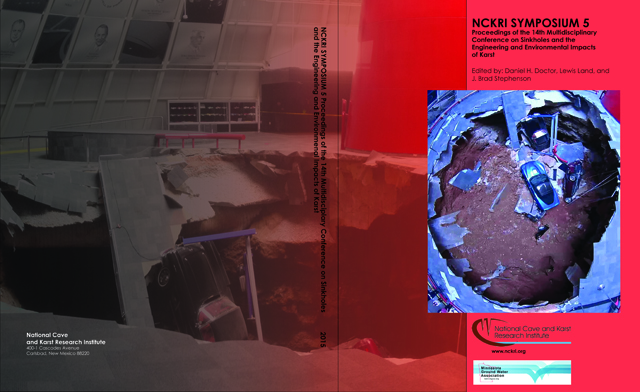Abstract
Paleozoic carbonate aquifers represent major groundwater resources in Belgium. Karstification processes affect most of them and Belgium counts many hydrologically active karst networks. Given the intrinsic vulnerability of such geological objects, comprehensive studies are required in order to improve their protection and management. The KARAG project (Karst Aquifer ReseArch by Geophysic, 2013-2017) aims to identify the specific dynamic of karst aquifers by using geophysical and hydrogeological tools. This research is funded by the Belgium National Fund for Scientific Research (FNRS) and conducted by the University of Namur, University of Mons and the Royal Observatory of Belgium. The LKS – Lomme Karst System (Rochefort, southern Belgium) was chosen as it is a major Belgian karst system (10 km long) in the Givetian carbonate aquifer (Middle Devonian). The system is formed by two parallel components: the surface system (the Lomme River) and a complex underground system (multiple sinkholes with one main resurgence). Based on this layout, it is possible to study the aquifer dynamic and its relationship with the surface river. A high resolution monitoring has been installed since July 2013 in order to follow the system dynamic during several hydrogeological cycles. Multi-tracing experiments with different injections and monitoring points highlight the complexity of underground flow dynamics. Investigations enlightened the connectivity between monitoring points and how dependent of the hydrological conditions were these connections. The breakthrough curves analysis allows to characterize the hydrodynamic behavior of the underground flows within the aquifer. Modeling will be necessary to link hydrological and tracer tests data in order to build a detailed conceptual model for this karst system. This model will also be used to interpret geophysical data (ERT, gravimetry) collected in order to study the unsaturated and epikarst zones.
Rights Information
DOI
http://dx.doi.org/10.5038/9780991000951.1021
Included in
Environmental Monitoring Commons, Geology Commons, Hydrology Commons, Water Resource Management Commons
Hydrogeological Dynamic Variability in the Lomme Karst System (Belgium) as Evidenced by Tracer Tests Results (KARAG Project)
Paleozoic carbonate aquifers represent major groundwater resources in Belgium. Karstification processes affect most of them and Belgium counts many hydrologically active karst networks. Given the intrinsic vulnerability of such geological objects, comprehensive studies are required in order to improve their protection and management. The KARAG project (Karst Aquifer ReseArch by Geophysic, 2013-2017) aims to identify the specific dynamic of karst aquifers by using geophysical and hydrogeological tools. This research is funded by the Belgium National Fund for Scientific Research (FNRS) and conducted by the University of Namur, University of Mons and the Royal Observatory of Belgium. The LKS – Lomme Karst System (Rochefort, southern Belgium) was chosen as it is a major Belgian karst system (10 km long) in the Givetian carbonate aquifer (Middle Devonian). The system is formed by two parallel components: the surface system (the Lomme River) and a complex underground system (multiple sinkholes with one main resurgence). Based on this layout, it is possible to study the aquifer dynamic and its relationship with the surface river. A high resolution monitoring has been installed since July 2013 in order to follow the system dynamic during several hydrogeological cycles. Multi-tracing experiments with different injections and monitoring points highlight the complexity of underground flow dynamics. Investigations enlightened the connectivity between monitoring points and how dependent of the hydrological conditions were these connections. The breakthrough curves analysis allows to characterize the hydrodynamic behavior of the underground flows within the aquifer. Modeling will be necessary to link hydrological and tracer tests data in order to build a detailed conceptual model for this karst system. This model will also be used to interpret geophysical data (ERT, gravimetry) collected in order to study the unsaturated and epikarst zones.

